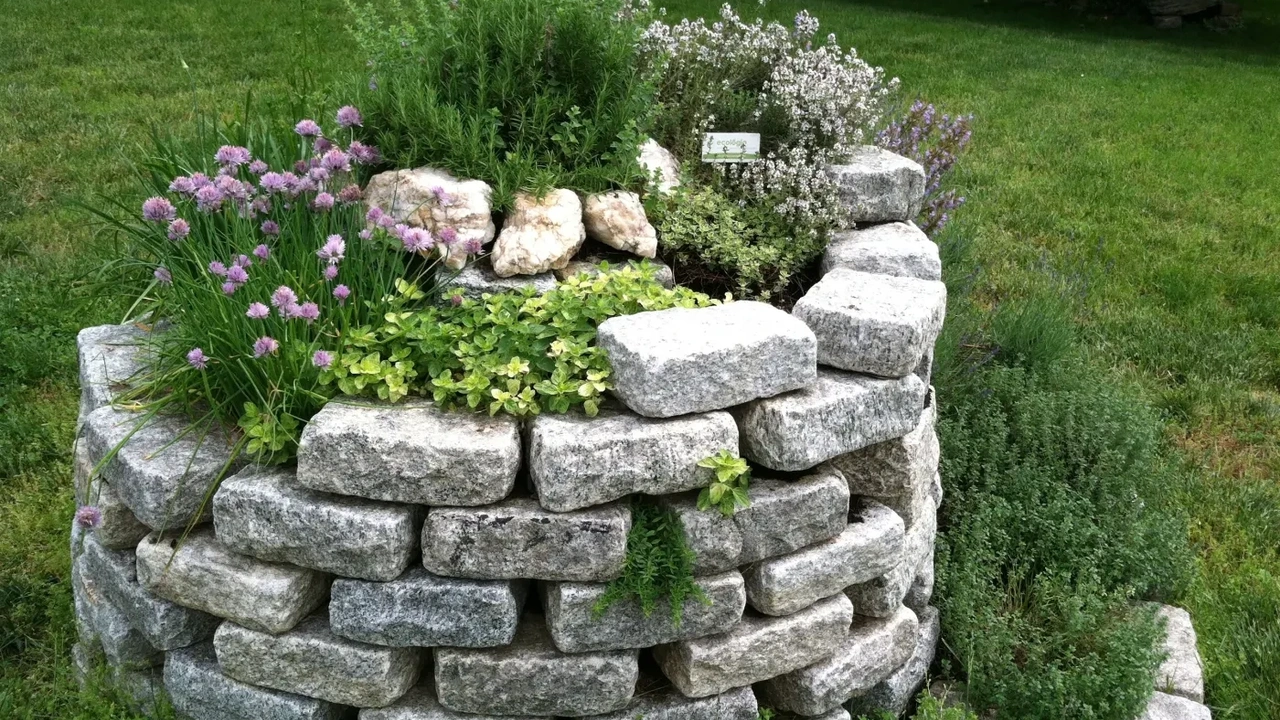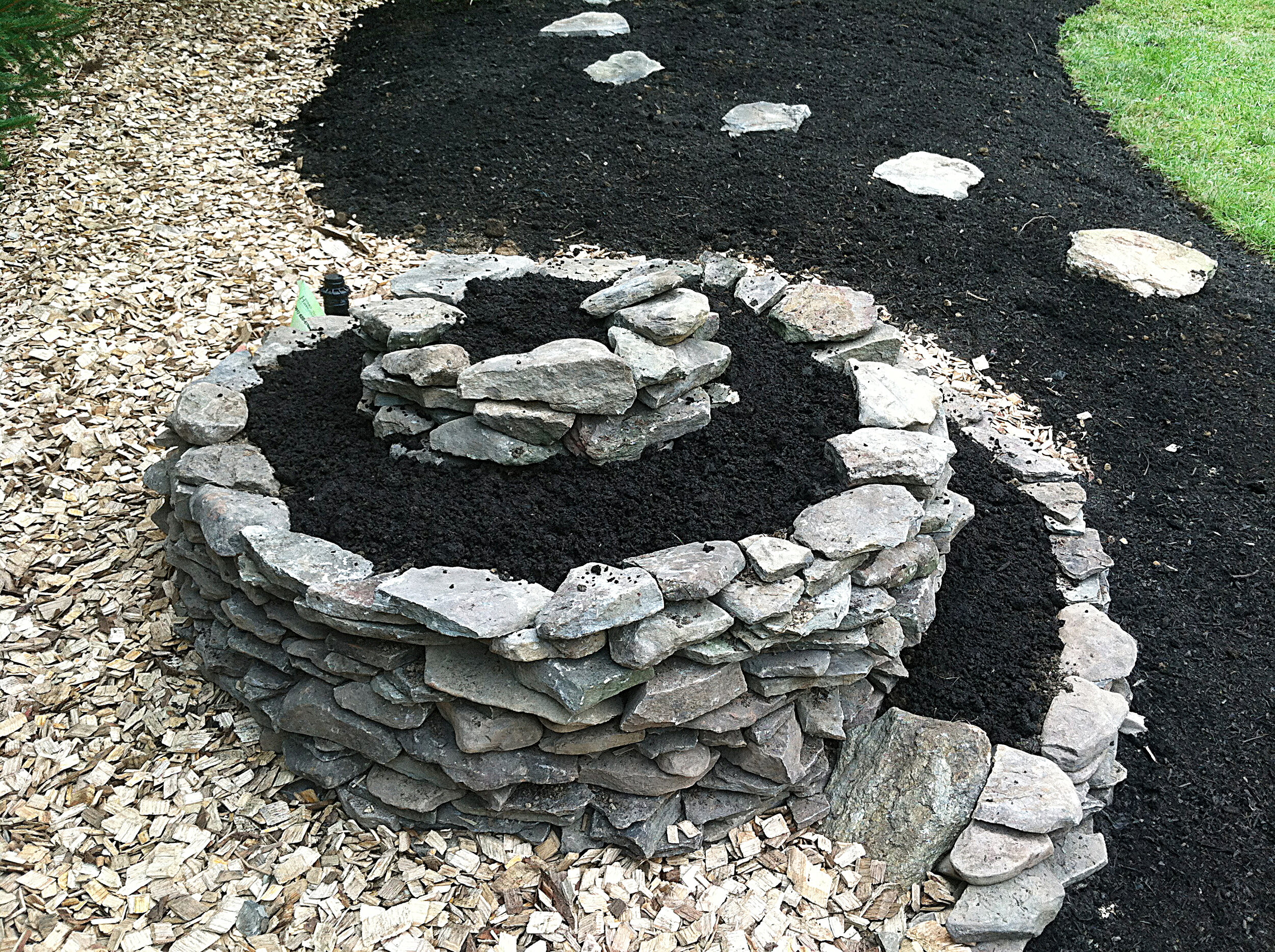
Story by Michael Judd, Founder and Principal Designer, Ecologia Design

There are many benefits to planting an herb spiral raised bed garden:
-
Fantastic year-round edible landscape architecture
-
Creates micro-climates for your favorite herbs and veggies
-
Easy and fun to build
-
Space and water saver
-
High productivity in a small space
-
Can fit anywhere, even on patios
Watch this video on herb spirals.
Why the Spiral?
The garden spiral is like a snail shell, with stone spiraling upward to create multiple micro-climates and a cornucopia of flavors on a small footprint. Spirals can come in any size to fit any space, from an urban courtyard to an entire yard. You don’t even need a patch of ground, as they can be built on top of patios, pavement, and rooftops. You can spiral over an old stump or on top of poor soil. By building up vertically, you create more growing space, make watering easy, and lessen the need to bend over while harvesting. To boot, spirals add instant architecture and year-round beauty to your landscape: the perfect garden focal point.

One of the beauties of an herb spiral is that you are creating multiple microclimates in a small space. The combination of stones, shape, and vertical structure offers a variety of planting niches for a diversity of plants. The stones also serve as a thermal mass, minimizing temperature swings and extending the growing seasons. Whatever you grow in your spiral, it will pump out a great harvest for the small space it occupies. I’ve grown monstrous cucumbers in my large garden spiral, with one plant producing over 30 prize-size fruits. The spiral is a food-producing superstar!
Habitat
Stacked stones create perennial habitat for beneficial critters, such as lizards and spiders that help balance pest populations in the garden. The stone network is a year-round safe haven for beneficial insects and other crawlies that work constantly to keep your garden in balance—and you in the hammock. A little design for them up-front pays big, tasty dividends later.

Planting the Spiral, Filling the Niches

Exposed to the sun and wind, the top of the spiral is great for crowning with Mediterranean herbs, such as rosemary, thyme, and oregano. Coming down the spiral as it faces east and the morning light, we find a good place for more delicate plants, such as parsley and chives. Then around the sunny south and west sides, basil, lavender, and sages will do great. At the low, moist, north-facing side, cilantro and cress will thrive. To maximize the micro-climates, design the low side of the spiral end to face north.
With such a variety of niches, the spirals can be planted with just about anything. It does not have to be for only growing herbs or reserved for areas with lots of sun. Simply maximize on your location and plant interests.
Spirals can graft nicely to surrounding architecture.


Raspberry Thyme Tom Collins
1/3 cup raspberries
2 sprigs of thyme
¼ cup good dry gin
3 TSB sugar¼ cup water
Juice of one lemon
Tonic to taste

Put it Together:
Heat the sugar and lemon in water, stirring constantly until the sugar has dissolved. Allow to cool. Remove the thyme leaves from the stems and mash together with the raspberries. Save a few leaves and berries whole to garnish later.
Stir together the mash and sugared water while still warm. Cool to room temperature. Shake the mixture with the gin, pour over ice and add tonic. Mix in a few extra whole berries and garnish with leaves of thyme. Sip and contemplate the magnificence of your herb spiral.


